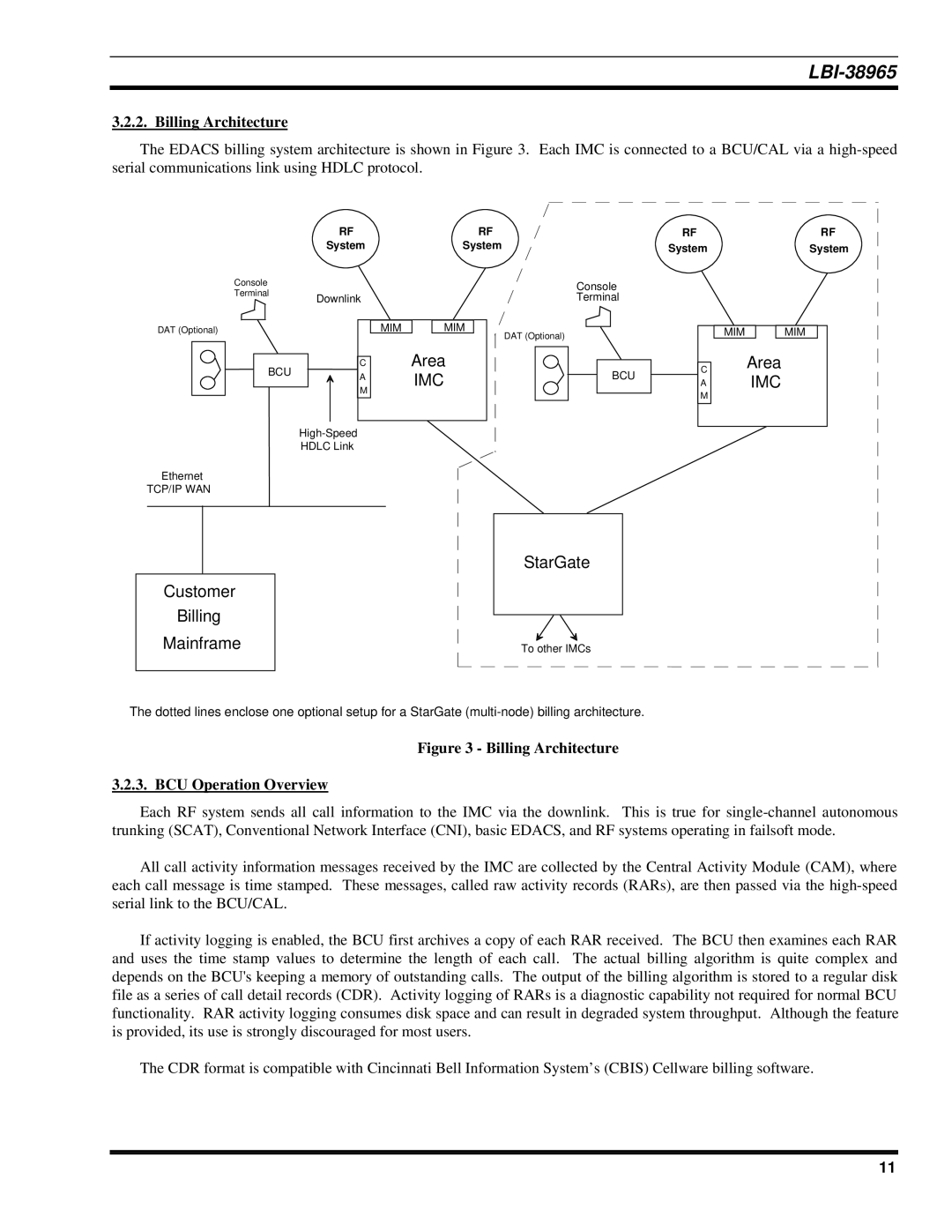
LBI-38965
3.2.2. Billing Architecture
The EDACS billing system architecture is shown in Figure 3. Each IMC is connected to a BCU/CAL via a
RF | RF |
System | System |
RF | RF |
System | System |
Console
Terminal
Downlink
Console Terminal
DAT (Optional)
BCU
HDLC Link
Ethernet
TCP/IP WAN
C
A
M
MIM |
| MIM |
Area
IMC
DAT (Optional)
BCU
| MIM |
| MIM |
|
CArea
AIMC
M
StarGate
Customer
Billing
Mainframe | To other IMCs |
The dotted lines enclose one optional setup for a StarGate
Figure 3 - Billing Architecture
3.2.3. BCU Operation Overview
Each RF system sends all call information to the IMC via the downlink. This is true for
All call activity information messages received by the IMC are collected by the Central Activity Module (CAM), where each call message is time stamped. These messages, called raw activity records (RARs), are then passed via the
If activity logging is enabled, the BCU first archives a copy of each RAR received. The BCU then examines each RAR and uses the time stamp values to determine the length of each call. The actual billing algorithm is quite complex and depends on the BCU's keeping a memory of outstanding calls. The output of the billing algorithm is stored to a regular disk file as a series of call detail records (CDR). Activity logging of RARs is a diagnostic capability not required for normal BCU functionality. RAR activity logging consumes disk space and can result in degraded system throughput. Although the feature is provided, its use is strongly discouraged for most users.
The CDR format is compatible with Cincinnati Bell Information System’s (CBIS) Cellware billing software.
11
